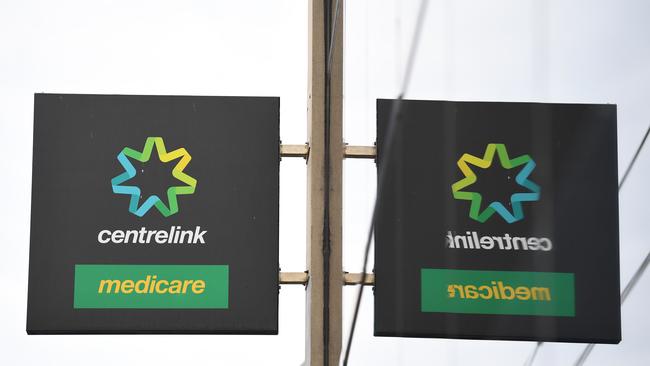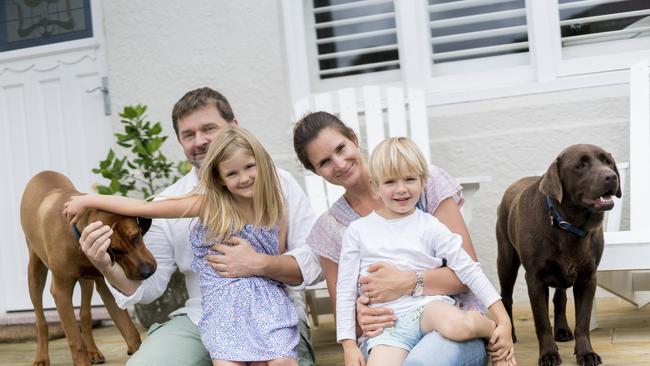Federal Budget 2023: How Australians will be affected and who is worse off
The Federal Budget can be compared to a challenge in Squid Game, where green is safe and red is game over. See if you survive under the changes and what tax break you’ll get.
Green is good, and a red light is bad, although you won’t meet a gruesome death – as in the hit TV show Squid Game – if our budget analysis slaps you with red or amber.
We’ve examined 10 different demographics and given them red, amber or green lights to show the budget’s overall impact on them.
Our analysis aims to make some sense of a budget where some Australian households will receive a big fat zero, while others pocket more than $16,000 in the next two financial years.
That may seem unfair. But so was Squid Game.
But it’s the numbers that were not splashed across the budget pages that have the biggest impact on Australians’ personal finances in the next couple of years.
The popular “what’s in it for me” question that drives people’s thinking is harder to answer in this budget, because the devil is in the detail that’s not there.
Tax looms large, and millions of workers won’t realise they have been hit until later this year, if ever. The Low and Middle Income Tax Offset, which paid up to $1500 to people annually via their tax returns, ended in 2022, so people will receive smaller refunds from July (and perhaps berate their accountant).
At the other end of the scale, the stage three tax cuts legislated by the previous government pack a huge financial punch – up to $9075 of annual tax savings for high-income workers from July 2024. They were ignored by the budget, at least for now, despite calls to scrap what are seen by some as largesse for the rich.
Stage three remains controversial, which shows we have short memories. Stage one and two tax cuts for lower income earners previously passed without a whimper.
Most of the big budget changes were unveiled in recent weeks, and represent a delicate balancing act to avoid stoking the inflation fire and sending home loan interest rates and rents even higher.
Like stage three, big childcare savings were previously announced, while the electricity bill relief and health cost changes are structured in a way that avoids handing people cash that can be splurged on retail stuff.
The other big number not in the budget is the Reserve Bank’s official interest rate, still rising and costing households at least $1000 a month more than they paid a year ago. No amount of budget tweaking can ease that level of financial pain.
Inside Canberra’s budget lockup, PwC chief economist Amy Auster described it as a “bread and butter budget, providing very targeted support for the one million Australians who really need it”.
“Most households in Australia will benefit in the next few years from increased childcare subsidies and the stage three tax cuts already announced,” she said.
“To go harder would really risk compounding our inflation problem, and everybody would be worse off.”
Ms Auster said budget measures announced for Medicare, bulk billing and medicine dispensing were clever because they were not providing handouts.
“The increase in Commonwealth rental assistance is important for renters, but also for the affordable social housing sector to incentivise more construction.”
See how you will fair under the Albanese Government’s Federal Budget plan.
SINGLES (green light)
Young job hunters will receive a $40-a-fortnight boost in Jobseeker Payment, Austudy, Youth Allowance and other payments, plus up to $500 in electricity bill relief if they’re among the five million households to qualify. For workers, the end of the Low and Middle Income Tax Offset in 2022 won’t be noticed until they do their tax returns from July and find refunds of up to $1500 missing from last year. Higher-income earners are in line for significant tax cuts from July 2024.
FAST FACT: A $1040 annual boost is coming from the rise Jobseeker, Austudy and Youth Allowance payments.

DINKS (red light)
Some double-income couples will receive nothing from this budget, while those earning high incomes will have something to smile about. The more they earn, the better. The streamlined income tax system coming into force in July 2024 means a household with two people earning $60,000 each get a combined tax cut of $750, but high-flyers earning $200,000 each will enjoy a household tax boost of $18,150 from next year. Some DINKS households may receive power bill relief or increased support payments.
FAST FACT: Partners each earning a $90,000 average wage receive a modest combined tax cut of about $43 a week in mid-2024.

SOLE PARENT (green light)
Some sole parents are the biggest budget winners this year, courtesy of the government expanding the Parenting Payment (Single) to make it available for parents with children up to 14, rather than eight as it is now. This will deliver an estimated 57,000 single-parent families an extra $176.90 per fortnight. Many sole parents are also likely to receive electricity bill relief and bigger childcare subsidies from July this year. Single parents on high incomes will receive large tax cuts from July 2024.
FAST FACT: Lifting the children’s cut-off age from eight to 14 for the parenting payment for singles is a big win, delivering $4599 a year.
DOUBLE INCOME 50/50 WITH YOUNG KIDS (green light)
From July 1 this year, increased childcare subsidies will deliver extra dollars into the pockets of parents with young children. That saving will be up to $6364 a year for a household earning $125,000 a year with children in full-time care. People receiving Family Tax Benefit payments will also qualify for electricity bill relief of up to $500 depending on where they live. Double-income families will feel the loss of the Low and Middle Income Tax Offset when they do their next tax return and find their refunds are up to $3000 smaller.
FAST FACT: A family earning $150,000 combined receives a big increase in childcare subsidies this year – $7689

DOUBLE INCOME 67/33 WITH YOUNG KIDS (green light)
Bigger childcare subsidies, power bill relief, and looming tax cuts are the big-ticket benefits heading families’ way, starting with childcare changes in July that will pump thousands of extra dollars back into household budgets.
For a family with two children in full-time care and household income of $150,000, the saving will be $7689 in 2023-24 and then $9189 in 2024-25 once the stage three tax cuts kick in. Households receiving Family Tax Benefit payments will also qualify for up to $500 of electricity bill relief.
FAST FACT: Childcare subsidy changes announced last year ratchet up on July 1, delivering a household earning $100,000 more than $5000 of annual savings.

DOUBLE INCOME 50/50 WITH TEENS (amber light)
The kids are too old to benefit from childcare subsidy changes, but households with older children are often large energy-guzzlers and are still line for electricity bill relief of up to $500 if they receive certain government support payments. If the parents are high-income earners, big tax cuts are coming in 2024-25, although double-income families with more modest wages will feel the loss of the Low and Middle Income Tax Offset when they get a smaller tax refund later this year.
FAST FACT: A double-income household where each partner earns $130,000 will receive tax cuts totalling $5150 in 2024-25.
DOUBLE INCOME 67/33 WITH TEENS (amber light)
Parents with older children are more likely to be on higher wages, which means they could be looking at a nice windfall when the stage three tax cuts start in July 2024. And as their teenagers enter the workforce, superannuation changes that see compulsory super paid to workers earlier and more frequently will help them build bigger savings. Some households will also qualify for energy bill relief, cheaper medicines and increased rent assistance.
FAST FACT: A dual income household with combined earnings of $250,000 in a 67/33 per cent split gets $6100 in tax cuts in July 2024.
SINGLE INCOME COUPLE WITH YOUNG KIDS (green light)
Big childcare savings are on the way for families from July 2023. A couple with two children in full-time care can save $7689 thanks to increased subsidies, while having a stay-at-home parent can also deliver them electricity bill relief. When the stage three tax cuts arrive in July 2024, the savings can stretch beyond $15,000 for some high-income households. However, lower and middle-income households will feel the loss of up to $1500 from the Low and Middle Income Tax Offset scrapped in 2022.
FAST FACT: This demographic receives the biggest household saving in our entire analysis – $16,429 through childcare help and tax cuts for a single-income couple on $200,000 in 2024-25.

SINGLE INCOME COUPLE WITH TEENS (amber light)
Single-income families can potentially benefit most from the July 2024 tax cuts because the savings are focused on individuals. However, the amounts differ dramatically depending on taxable income – with an $80,000 household receiving $875 but a $200,000 household enjoying $9075 extra in their pay packet. Electricity bill relief will ease cost-of-living pressures for some, as will cheaper medicines through a revamp of dispensing rules.
FAST FACT: A single-income couple earning $100,000 gets a tax cut totalling $1375 as part of as streamlined income tax system from July 2024.
RETIREES (red light)
Of all the demographics, retirees arguably have the least to be happy about. At the high-income end, 80,000 seniors will pay an extra 15 per cent tax on super balances above $3 million from July 2025, while those on lower incomes and pensions miss out on the $1040 annual boost that Jobseeker, Austudy and other recipients get from July 1. Retirees will, however, save money from reduced medicine and GP visit costs as dispensing quantities double, and many will benefit from electricity bill relief and increased Commonwealth rent assistance.
FAST FACT: Concession card holders are forecast to save $43.80 annually from reduced medicine costs.
Originally published as Federal Budget 2023: How Australians will be affected and who is worse off



